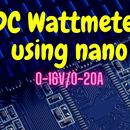Introduction: Simple 4V Lead Acid Battery Charger With Indication
Hello guys!!
This charger I made worked fine for me. I had charged and discharged my battery several times to know the charging voltage limit and saturation current. The charger I developed here is based upon my research from the internet and the experiments I did with this battery.
I had spent a lot of days to develop this charger. Every day I used to try different circuit topology to get the proper output from the charger. Finally, I reached this circuit which is giving me satisfying output and performance.LM393 is a dual comparator IC which is the heart of this circuit. There are two LEDs present in this circuit Red and Green. Red indicates charging and green indicates a full charge.
NOTE: If the battery is not connected and the supply is given then the green LED will be always turned ON. To avoid this you can use a switch connected in series with the charger circuit.
Features
1.Charging indication
2.Full charge indication
3.Overcurrent protection
4.Float Charging
During charging the red led turns ON and when the battery approaches full charge green led also turns ON.So when both the LEDs are ON it means the battery is about to full charge. After attaining full charge red led turns off and green remains ON, this means the battery is now in float stage. The current now flowing through the battery will be 20ma.
Supplies
- LM393 IC -1nos
- IC base - 1nos
- Resistors - 10K,2.2K,1K,680ohm,470ohm- All are 1/4W rated and Two 10ohm-2W rated
- Preset - 10K - 1nos
- Zener Diode - 5.1V/2W
- Capacitors - 10uf/25V - 2nos
- Transistor - TIP31C - 1nos,BC547 - 1nos
- Led - Red and Green-5mm
Step 1: Circuit Diagram
The charger is operated in 7V DC. In the circuit diagram, J2 is the input terminal and J1 is the output terminal. For getting 7V DC I used a buck converter and a full bridge rectifier using a 12V/1A transformer. You can also make an adjustable voltage regulator using LM317 instead of using a buck converter. Click here to know about the buck converter I used.LM393 turns its output high or low depending on its input voltages.
Current Limiting
The charging current is set by using two 10ohm resistors, 10K potentiometer, and TIP31C transistor. Here I am using a 1.5AH battery and I decided to charge the battery at a C/5 rate( 1500ma/5=300ma). By adjusting the 10K pot we can set the charging current to 300ma. Initially, the battery will be charging at 300ma, since the resistor is connected in series with battery the voltage drop across the resistor will be 5x0.3A=1.5V.During charging the voltage across the battery will vary starting from 4.3V(Low Charge Voltage) to 5.3V(Full Charge Voltage).When the battery charges overtime the charging current decreases. So when the current decreases the drop across the resistor will also decrease.
The resistor value I calculated is using the formula 7- 5.5/0.3= 5ohm. Since I did not get 5ohm resistors I used two 10ohm resistors in parallel. The power rating of the resistor can be calculated by using the formula 0.3x0.3x5=0.45W.A 0.5W is required but I used 2W since it was there in my components box.
NOTE: If your AH rating is more than 1.5 and you want to increase the charging current, change the value of resistors R7 and R2 using the formula 7-5.5/ charging current
Float Charging
When the voltage across the battery reaches above 5.1V(Zener voltage) transistor Q2 turns on and the green LED lights up, since the base of transistor Q1 is connected to the collector of Q2, the base current to Q1 decreases. Consequently, the Emitter voltage of Q1 decreases to 5.1V. At this stage, float charging is started. This will prevent the battery from self-discharge.
Step 2: PCB Layout
I used the Proteus design suite to draw the PCB layout and schematic of this circuit. If you want to etch this board at home watch some youtube videos related to PCB etching.
Step 3: Finished Board
After placing the components and soldering it carefully the circuit board is ready. Provide a heat sink to transistor Q1 to dissipate the heat.
I had previously published a battery charger but it has got some disadvantages. I hope this instructable will help all those who are searching for a 4V lead-acid battery charger.













